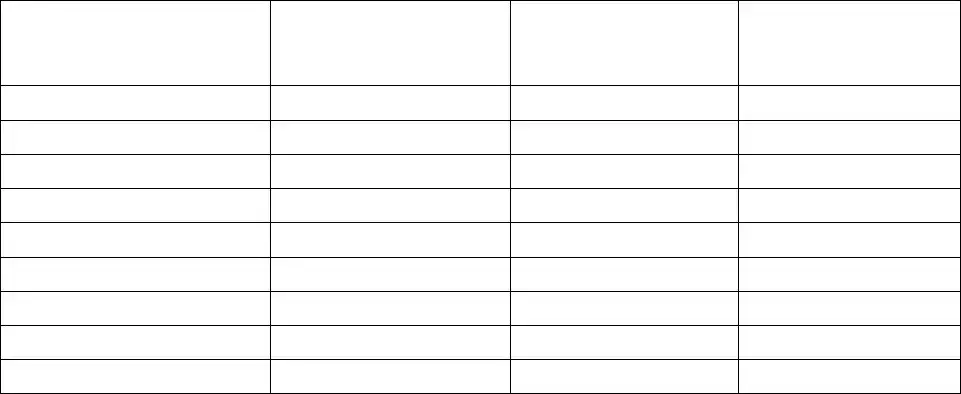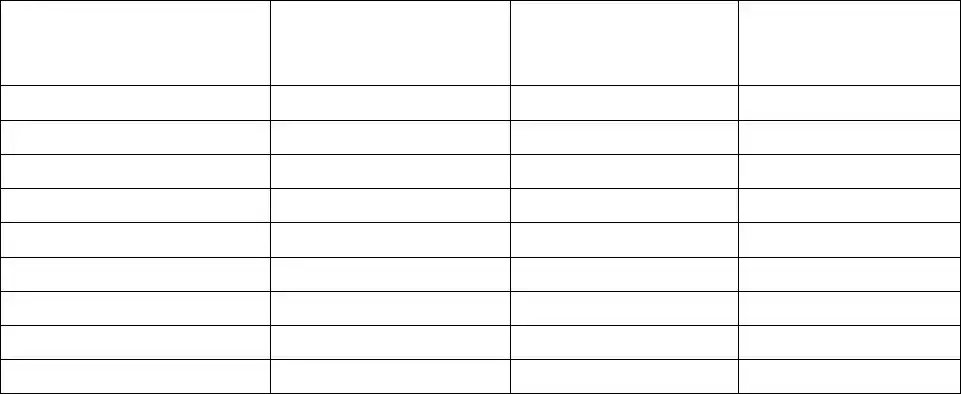2
Resident Name __________________________________ |
Date Completed ______________________ |
Date of Birth ____________________________________ |
|
5.History. Does the resident have a history or current problem related to abuse of prescription, non-prescription, over-the-counter (OTC), illegal drugs, alcohol, inhalants, etc.?
(a)Substance: OTC, non-prescription medication abuse or misuse
1. |
Recent (within the last 6 months) |
Yes |
No |
2. |
History |
Yes |
No |
(b)Abuse or misuse of prescription medication or herbal supplements
1. |
Currently |
Yes |
No |
2. |
Recent (within the last 6 months) |
Yes |
No |
(c)History of non-compliance with prescribed medication
1. |
Currently |
Yes |
No |
2. |
Recent (within the last 6 months) |
Yes |
No |
(d)Describe misuse or abuse: _________________________________________________________
____________________________________________________________________________________
6.* Risk factors for falls and injury. Identify any conditions about this resident that increase his/her risk of falling or
injury (check all that apply): 
 orthostatic hypotension
orthostatic hypotension 
 osteoporosis
osteoporosis 
 gait problem
gait problem 
 impaired
impaired
balance  confusion
confusion  Parkinsonism
Parkinsonism  foot deformity
foot deformity  pain
pain  assistive devices
assistive devices  other (explain)
other (explain)
__________________________________________________________________________________________ |
|
7.* Skin condition(s). Identify any history of or current ulcers, rashes, or skin tears with any standing treatment |
|
orders. _________________________________________________________________________________ |
|
__________________________________________________________________________________________ |
|
8.* Sensory impairments affecting functioning. (Check all that apply.) |
|
|
|
|
|
|
|
(a) Hearing: |
Left ear: |
|
|
|
Adequate |
|
Poor |
Deaf |
|
Uses corrective aid |
|
|
|
(b) Vision: |
Right ear: |
|
|
|
Adequate |
|
Poor |
Deaf |
|
Uses corrective aid |
|
|
|
Adequate |
Poor |
|
Uses corrective lenses |
Blind (check all that apply) - |
R |
L |
(c) Temperature Sensitivity: |
|
|
|
Normal |
Decreased sensation to: |
Heat |
Cold |
|
|
|
9. Current Nutritional Status. |
Height |
|
|
inches |
|
|
Weight |
|
lbs. |
|
|
|
|
|
(a) Any weight change (gain or loss) |
in the |
past 6 months? |
|
|
|
|
|
Yes |
No |
|
|
(b) How much weight change? |
|
|
lbs. in the past |
|
months (check one) |
Gain |
Loss |
|
|
(c) Monitoring necessary? (Check one.) |
|
|
|
|
|
|
|
Yes |
No |
|
|
If items (a), (b), or (c) are checked, explain how and at what frequency monitoring is to occur: ___________ |
|
__________________________________________________________________________________________ |
|
(d) Is there evidence of malnutrition or risk for undernutrition? |
|
|
|
Yes |
No |
|
|
(e)* Is there evidence of dehydration or a risk for dehydration? |
|
|
|
Yes |
No |
|
|
(f) Monitoring of nutrition or hydration status necessary? |
|
|
|
|
|
Yes |
No |
|
|
If items (d) or (e) are checked, explain how and at what frequency monitoring is to occur: _______________
__________________________________________________________________________________________
(g)Does the resident have medical or dental conditions affecting: (Check all that apply)
 Chewing
Chewing  Swallowing
Swallowing  Eating
Eating  Pocketing food
Pocketing food  Tube feeding
Tube feeding
(h)Note any special therapeutic diet (e.g., sodium restricted, renal, calorie, or no concentrated sweets restricted): _________________________________________________________________________________
__________________________________________________________________________________________
(i)Modified consistency (e.g., pureed, mechanical soft, or thickened liquids): _________________________
__________________________________________________________________________________________
(j) Is there a need for assistive devices with eating (If yes, check all that apply): |
Yes |
No |
Weighted spoon or built up fork |
Plate guard |
Special cup/glass |
|
|
(k) Monitoring necessary? (Check one.) |
|
|
Yes |
No |
If items (g), (h), or (i) are checked, please explain how and at what frequency monitoring is to occur:
__________________________________________________________________________________________
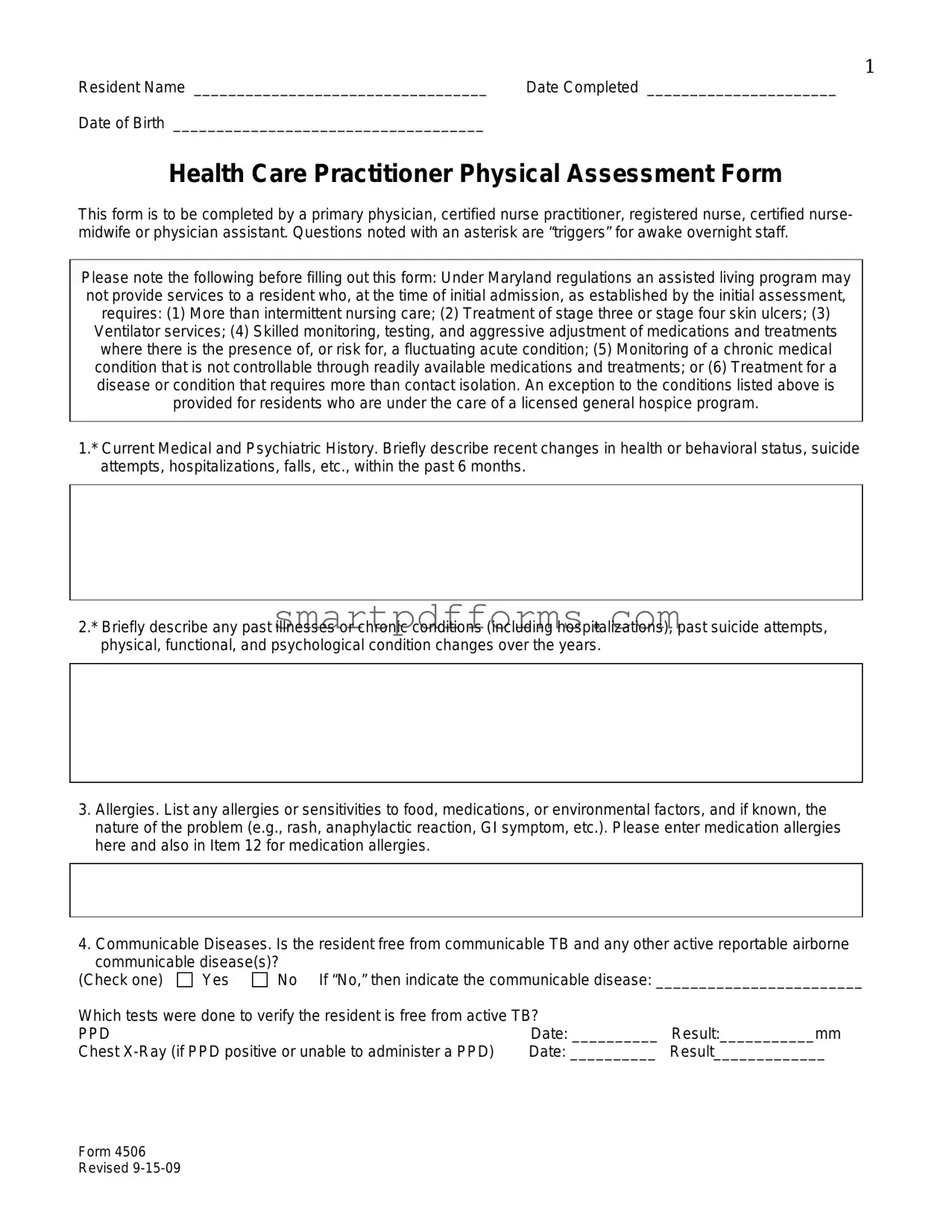

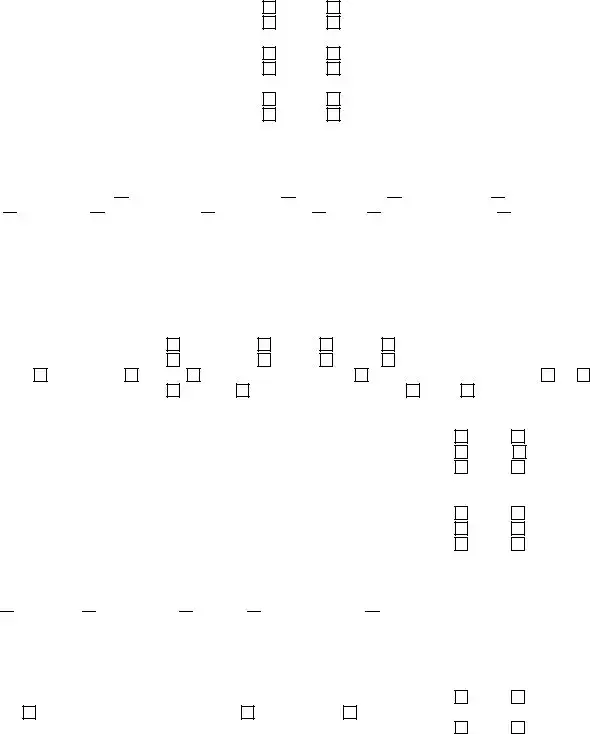

 orthostatic hypotension
orthostatic hypotension 
 osteoporosis
osteoporosis 
 gait problem
gait problem 
 impaired
impaired confusion
confusion  Parkinsonism
Parkinsonism  foot deformity
foot deformity  pain
pain  assistive devices
assistive devices  other (explain)
other (explain) Chewing
Chewing  Swallowing
Swallowing  Eating
Eating  Pocketing food
Pocketing food  Tube feeding
Tube feeding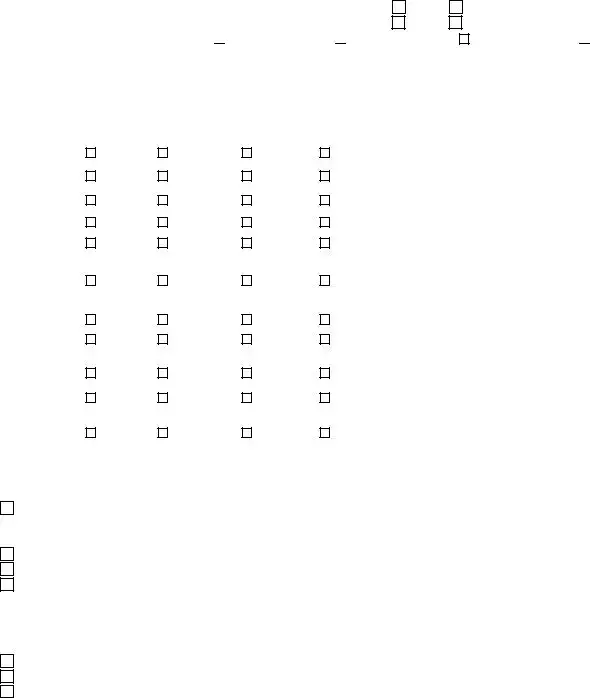



 Other
Other